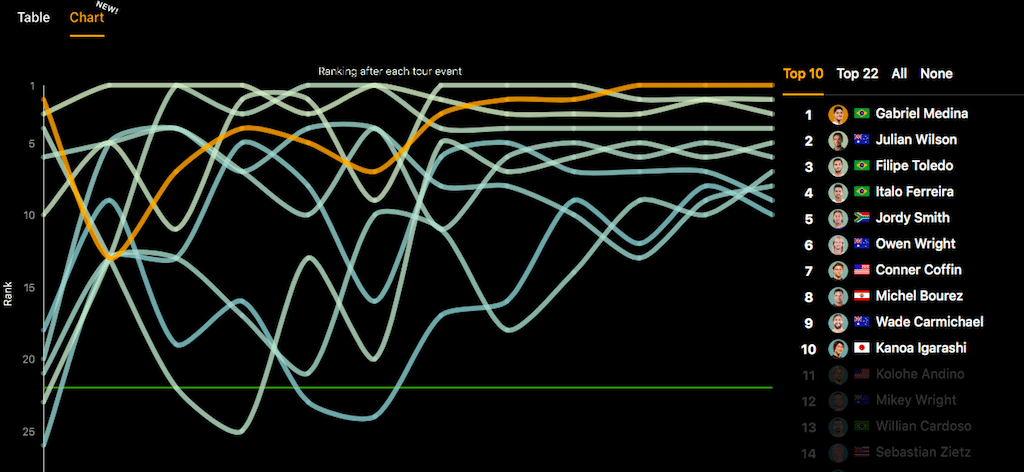Who is this man and why does he matter?
A few weeks a go now, I stood in line to see a surf film. In a strange serendipity, Bruce Brown’s son stood in line just in front of me.
All of this was both totally normal, as surfing, especially in the Santa Barbara area, is a very small world, but also unusual, because who stands in line these days to watch surfing. On this particular night, the line stretched around the block, so it seems, at least a few of us will show up for such things, even now, when every day we’re inundated with a firehose of fresh clips served up in an instant.
Annually, the Santa Barbara Film Festival selects a closing night film. This year, they chose Spoons, which traces the history of surfboard design in Santa Barbara. The film sets out to portray the area as a seedbed of innovation from Renny Yater’s time to the present. Yater’s 1964 Spoon design gives the film its name and its starting point.
I’ll say up front the film is worth watching for its wealth of interview material from Santa Barbara and beyond, and for its vintage footage.
Spoons opens up the coast in Bruce Brown’s studio, where Brown sits surrounded by film canisters. It’s beautifully elegiac, though I’ll confess to an acute anxiety over all that original film footage. Someone, please tell me it’s safely deposited in an archive somewhere. Fragile historic things near the coast make me so nervous, she says, looking around at her shelves stacked with first editions. This opening might be the most memorable part of the film for me, really, and I wanted them to linger there for longer.
There’s gorgeous footage of a largely undeveloped coast. Dirt roads and pickup trucks. Yater and George Greenough tend their lobster traps. The vibe is very Eden before the fall. A voice-over from shaper Marc Andreini about the historic ranches, their vast open spaces, and the cowboys of the land and sea strikes a slightly jarring note, as though it is all there for the taking.
In truth, the strongest part of Spoons is the early sections. There’s gorgeous footage of a largely undeveloped coast. Dirt roads and pickup trucks. Yater and George Greenough tend their lobster traps. The vibe is very Eden before the fall. A voice-over from shaper Marc Andreini about the historic ranches, their vast open spaces, and the cowboys of the land and sea strikes a slightly jarring note, as though it is all there for the taking.
(Also, Henry Jackson Turner called and would like his frontier thesis back.)
Predictably, Rincon holds a central place in the story. It provides both a challenge and a testing ground for the generations of designers the film depicts. Much is made of the wave’s speed and perfection, though arguably, it’s the imperfections, the way the wave changes speed as it passes from cobbles to sand and back to cobbles again, that creates the design problem. An old-school longboard on trim will slam down the line pretty damn fast. It’s the slowing down and the turning that’s the trick – and frequently leads to a dead forest of loose boards crashing through the inside.
Spoons ably explains Yater’s contribution to design. Long story short, his Spoon narrowed and shortened the longboard outlines of the time. George Greenough, meanwhile, rips across the screen on a tiny kneeboard. Seen in the context of footage of his contemporaries, Greenough’s top-to-bottom lines do look radical and fresh. His designs, meanwhile, confound everyone. Bob McTavish says in the film that when Greenough’s ideas reached him and his crew in Australia, they had no idea what to do with it all.
What’s missing from Spoons is context. It’s hardly fair to ask a filmmaker or writer to tell the whole story of everything, but establishing significance means showing why something stood out in its time. In 1964, when Yater was designing his Spoon, what was happening in the workshops in Hermosa Beach or Dana Point? How were their design problems different? Why was the Spoon such a departure? I needed to know more about what was happening outside Santa Barbara to understand why what was happening here was so influential.
While the film neatly draws a connection between Tom Curren’s cutback and Greenough’s crazed kneeboard lines, the thruster seems to arrive out of nowhere. If I hadn’t known better, I might have believed Al Merrick had created the shortboard….
As the film moves through time, this problem becomes more acute. Shaun Thomson speaks of going from a seven-foot single fin, to a twin fin, to a thruster in a matter of months. He’s exaggerating a tad here, but what’s not clear is why there is this sudden shift. While the film neatly draws a connection between Tom Curren’s cutback and Greenough’s crazed kneeboard lines, the thruster seems to arrive out of nowhere. If I hadn’t known better, I might have believed Al Merrick had created the shortboard, though his interviews in the film are careful to avoid this claim. Eat your heart out, Simon Anderson.
Late in the film, Ryan Lovelace gives an extended interview (with far fewer swears than his BG interview, so disappointing!) about his interest in board designs from the pre-thruster era. He compares the genealogy of surfboard design to a tree, some of whose branches simply stopped growing after the thruster showed up.
Maybe it was because those designs quite simply sucked. But Lovelace is convinced there’s a rich vein to mine that the shortboard revolution cut off. The absence of Anderson in the film, though, muddies the story of the creative chaos of happening in board design now.
Spoons does a lovely job of smoothly welding old and new footage together. Visually, the film is a joy. The one exception was an oddly anachronistic sequence of women, maybe shaping, maybe just hanging around a half-finished blank. I couldn’t figure out what was happening there. It highlighted a missed opportunity. If the filmmakers had wanted to include a woman shaper, Ashley Lloyd Thompson, now in Santa Cruz, credits her time in Santa Barbara for helping her refine her ideas about design and counts Greenough and Andreini among her influences.
If you are into vintage footage of California, dig surfboard design nerdery, and can play along with the film’s Santa Barbara-centric perspective, Spoons is worth a watch.
For me, the opening sequence with Brown will stay in my memory for a while. There we all were, standing in line, a long way from Endless Summer, and yet, maybe not so far at all.






